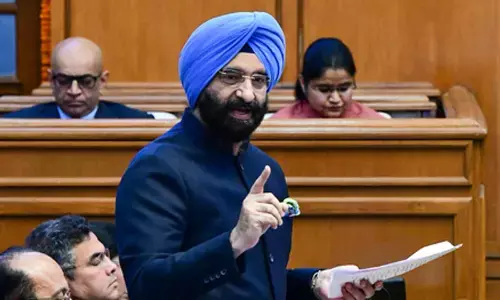Brahmaputra Bridge will link Bhutan with Vietnam

Brahmaputra Bridge will link Bhutan with Vietnam
The longest bridge over the Brahmaputra, which has been cleared for construction will become the lynchpin of a giant trans-Asian corridor that will connect landlocked Bhutan and Northeast India, with Dan Nang in Vietnam
New Delhi: The longest bridge over the Brahmaputra, which has been cleared for construction will become the lynchpin of a giant trans-Asian corridor that will connect landlocked Bhutan and Northeast India, with Dan Nang in Vietnam.
The giant project showcases the growing strategic partnership between India and Japan, balancing China's inroads in the region. The ambitious undertaking will also impact several ASEAN countries, especially Myanmar, Thailand, Cambodia and Laos. With Bhutan at the back-end, the 19-kilometre Dhubri-Phulbari bridge connects Dhubri in Assam with Phulbari in Meghalaya.
The flagship project acquired sharp focus after a 2018 agreement between India and the Japan International Cooperation Agency (JICA), for the infrastructure development of the north-east.
The gigantic effort will merge two parallel initiatives - the New Delhi-led India-Myanmar- Thailand trilateral highway and the East-West, Economic Corridor (EWEC) marshalled by Japan in partnership with Thailand, Laos and Vietnam.
The joint foray is a fusion of India's 'Act East' policy and Japan's 'Free and Open Indo-Pacific' strategy. From the Indian end, the trilateral highway starts in Manipur from the border town of Moreh, The Hindu reported.
On entering Myanmar, it heads for Mandalay, the historic city, on the east bank of the Irrawaddy river, 471 km away. From Mandalay, Myanmar's last royal capital before British annexation, the highway heads towards the Thai border, with Myawaddy being the last destination on the Myanmar side.
Myanmar's officialdom is emphatic that Myawaddy - the gateway to ASEAN - has huge potential as it can be easily connected with the Yangon deep water port, as well as the Andaman Sea. The 1,360-km route terminates at Mae Sot in Thailand, 20 km away to the northeast. Myawaddy is the junction of the two projects. It is the starting point of the East West Economic Corridor (EWEC), which heads towards Da Nang in Vietnam - a port city on the South China Sea.
During the Vietnam War, today's Da Nang International Airport had become one of the world's busiest aircraft hubs from where the US Air Force launched its infamous bombing campaigns. The 1,450-km EWEC route passes through Thailand's Province of the Mukhandan - the gateway to Laos, which is connected by the 1.6 km-long Second Thai-Lao friendship bridge over the Mekong, built with Japanese assistance.
From Savannakhet in Laos, the next strop in the corridor, the passage heads east towards Da Nang, 486 km away. On the way, the Japanese have also been involved in constructing the 6.28-km Hai Van tunnel, the longest in Southeast Asia, which links Hue, a city in Central Vietnam, with Da Nang. Referring specifically to Myanmar, Manabu Fujimura, Professor at Tokyo's Aoyama Gakuin University, said in an interview with the website Consult-Myanmar that Chinese economic influence in Myanmar will continue to radiate "from Muse [in Shan State on Myanmar's border with China's Yunnan Province] to Mandalay and 'upper Burma' in general, while Japanese and Thai economic influence will continue to spill over from Myawaddy to Yangon and 'lower Burma' in general".
China, on its part is building a railway that will connect Kunming with Thailand via Laos. It has also signed the China Myanmar Economic Corridor, which ropes in the port of Kyaukpyhu in the Bay of Bengal. China also is keen to build the Kra canal, which will by-pass the more vulnerable and US dominated Malacca straits-a key commercial artery that links the Indian Ocean with the South China Sea.
(This content is being carried under an arrangement with indianarrative.com)















